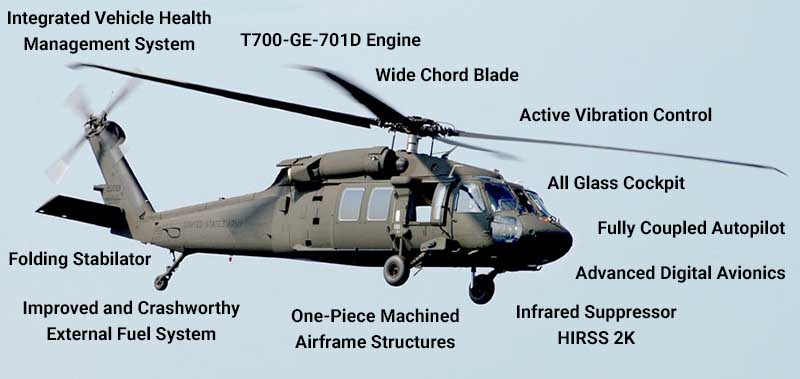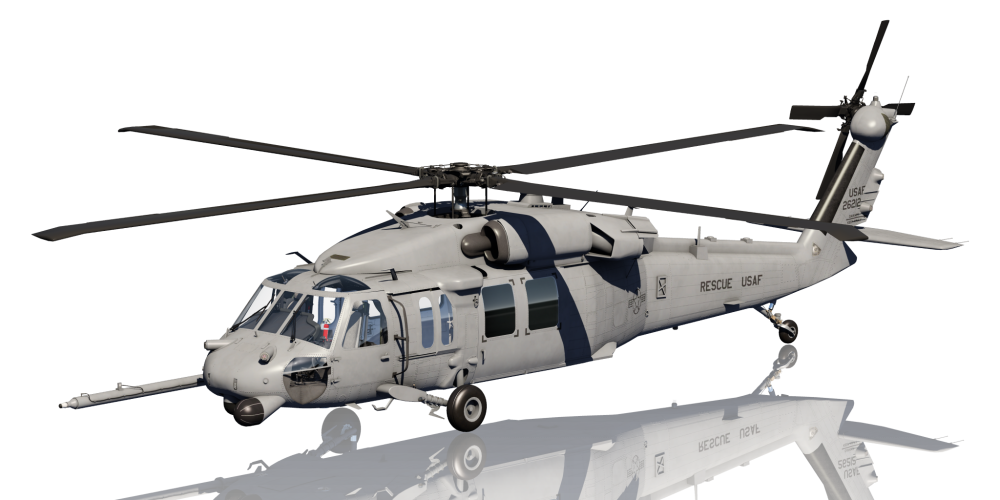The UH 60 and Its Contribution to Airborne Operations in Critical Objectives
The UH 60 and Its Contribution to Airborne Operations in Critical Objectives
Blog Article
UH-60: Technologies in Modern Helicopter Layout
The UH-60 helicopter stands as a standard in contemporary air travel, showcasing considerable developments in design and modern technology that deal with the developing demands of army procedures. Its consolidation of advanced products not just improves performance but additionally addresses essential safety and security problems. In addition, the combination of advanced avionics has changed functional abilities, enabling greater situational recognition and decision-making effectiveness. As we discover the development and key advancements of the UH-60, it becomes essential to think about how these growths influence not just current applications yet also the future landscape of helicopter style.

Development of the UH-60
The evolution of the UH-60 Black Hawk helicopter represents a significant landmark in aerospace engineering and army aeronautics. Introduced in the late 1970s, the UH-60 was designed by Sikorsky Aircraft to meet the United States Army's requirement for a versatile utility helicopter with the ability of carrying out a range of goals. Its layout stressed rate, maneuverability, and durability, establishing new criteria for operational efficiency.
The UH-60 features an unique four-blade rotor system, which improves lift and security, allowing it to run efficiently in varied environments. Its airframe is built from innovative composite materials, adding to a reduction in weight while preserving architectural integrity. The helicopter's style additionally integrates enhanced the rules of aerodynamics, which enhances gas efficiency and enhances array.
Throughout the years, the Black Hawk has actually gone through numerous upgrades to enhance its capacities, including boosted engines, progressed flight control systems, and modular systems for very easy maintenance and flexibility. The helicopter's ability to do missions varying from army transportation to clinical evacuation has strengthened its duty as a backbone of U.S. military operations. The UH-60 Black Hawk stays a prime instance of just how innovation in helicopter style can substantially influence army performance and operational flexibility.
Advanced Avionics Solutions
Improvements in avionics systems have actually changed the capacities of modern helicopters like the UH-60 Black Hawk, improving functional efficiency and situational understanding (UH 60). The assimilation of innovative avionics enables boosted interaction, navigation, and flight management, making the UH-60 much more versatile in diverse goal accounts
Among the vital functions is the sophisticated digital cockpit, which employs multifunction displays that provide real-time information, ensuring pilots have prompt accessibility to essential trip info. This streamlining of info lessens pilot workload and enhances decision-making processes throughout facility procedures. Furthermore, the consolidation of GPS and inertial navigation systems makes it possible for specific positioning and path planning, improving mission implementation in difficult atmospheres.
Moreover, progressed avionics systems boost interaction abilities via secure data web links and voice interaction systems, allowing seamless control with ground pressures and other airplane. The combination of automatic trip control systems further adds to improved stability and control, particularly in adverse climate condition or during low-altitude maneuvers.
Engine and Efficiency Enhancements
Engine efficiency in modern helicopters has taken a considerable jump ahead, driven by technologies that boost reliability, power, and efficiency. The UH-60 Black Hawk, for circumstances, makes use of the T700-GE-701C engine, which includes a dual-channel, full-authority electronic engine control system.
Furthermore, the integration of engine health and wellness tracking systems permits real-time diagnostics and anticipating upkeep, dramatically improving operational reliability. These systems not just sharp staffs to prospective problems before they end up being important but also facilitate much more effective maintenance scheduling, thus decreasing downtime.

Products and Structural Innovations
Current developments in materials and architectural design have changed modern helicopter building, boosting both efficiency and sturdiness. The intro of innovative composite products, such as carbon fiber reinforced polymers, has considerably decreased weight while preserving architectural stability. This change not just enhances gas performance yet also increases payload capacity, enabling helicopters like the UH-60 to carry out even more diverse objectives.
Furthermore, advancements in light weight aluminum alloys and titanium parts have actually added to boosted resistance to rust and exhaustion, expanding the life-span of important airframe components. The tactical use of these products has led to a decrease in maintenance needs and boosted general functional preparedness.

Furthermore, the assimilation of computer-aided layout (CAD) and additive production innovations has actually allowed extra complex geometries and light-weight structures, optimizing the wind resistant efficiency of helicopter layouts. These improvements assist in quick prototyping and production, enabling makers to respond swiftly to advancing mission needs.
Security and Survivability Attributes
Safety and survivability attributes in contemporary helicopter design have ended up being critical, showing the enhancing needs for goal effectiveness in tough environments. The UH-60 Black Hawk, a significant instance, incorporates advanced technologies to boost staff and passenger protection. One of the most essential advancements is the incorporation of crashworthy fuel systems developed to lessen the danger of fire throughout influence. In addition, the airframe is created with enhanced products that absorb and dissipate power, more protecting occupants in the event of a crash.
The helicopter likewise employs a ballistic protection system, that includes armored staff seats and crucial systems protecting, decreasing susceptability to tiny arms fire and shrapnel. Improved situational understanding is achieved via innovative avionics and sensor technologies, allowing pilots to identify and stay check my site clear of dangers efficiently.
Moreover, the assimilation of redundancy in important systems-- such as double engines and get redirected here several flight control networks-- makes sure continued procedure even if one system falls short. The UH-60 is furnished with sophisticated emergency flotation protection gadgets, enhancing survivability in water touchdowns. Collectively, these attributes not only improve the safety and security of employees but additionally enhance mission success prices in hostile environments, showing the commitment to excellence in helicopter layout.
Final Thought
The UH-60 helicopter stands for a considerable development in modern aviation modern technology, including cutting-edge materials, advanced avionics, and robust safety and security attributes. Its development reflects a commitment to boosting performance and operational efficiency while guaranteeing pilot and crew survivability. The assimilation of lightweight compounds and progressed navigation systems emphasizes the helicopter's versatility in various armed forces missions. Generally, the UH-60 offers as a criteria for future growths in helicopter style, personifying strength and adaptability in modern military procedures.
The UH-60 helicopter stands as a standard in modern-day aeronautics, showcasing substantial advancements in design and technology that provide to the advancing needs of army procedures. As we check out the development and essential developments of the UH-60, it becomes vital to think about how these developments influence not just present applications however also the future landscape of helicopter design.
Presented in the late 1970s, the UH-60 was made by Sikorsky Airplane to satisfy the United States Army's demand for a flexible utility helicopter capable of like it executing a selection of objectives. The UH-60 Black Hawk remains a prime instance of exactly how development in helicopter design can significantly impact military performance and functional flexibility.
On the whole, the UH-60 offers as a criteria for future developments in helicopter layout, symbolizing resilience and convenience in modern military procedures.
Report this page